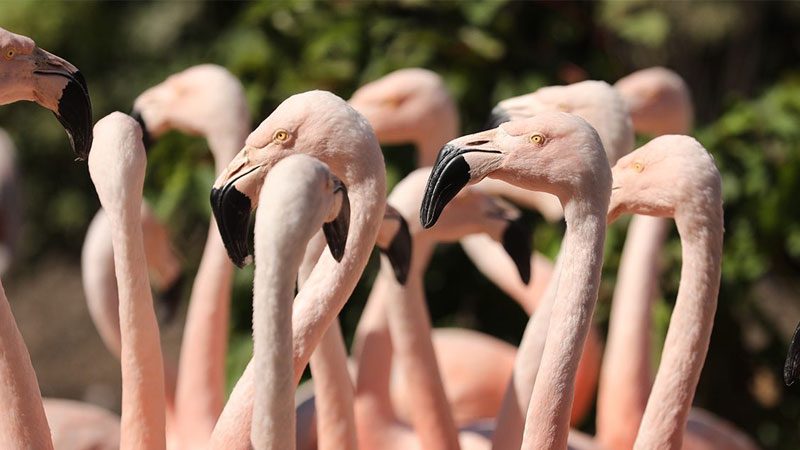Welcome to Lincoln Park Zoo’s new web app! Share your feedback
Chilean Flamingo
Waterfowl Lagoon
Did You Know?
- Chilean flamingos get their vibrant orange-pink plumage from their carotenoid-rich diet. This pigment, which is the same that gives carrots their color, is found in the algae and small crustaceans they eat. Juveniles are gray in color.
- To feed, flamingos hold their bill upside down in the water and use their tongue as a piston to move water and mud. The water is filtered by comb-like structures called lamellae.
- These birds can tolerate extreme conditions, such as the elevated altitude in the Andes Mountains. They are well-suited to Chicago’s harsh winters.
Don’t See the Animals?
Why aren’t animals visible at all times? To promote positive animal welfare, we provide animals with choices. They can choose to spend time in areas that are out of public view.

Take an Animal Home with You
Overview
Scientific Name: Phoenicopterus chilensis
Class: Birds
Diet: Aquatic invertebrates like crustaceans, shrimp, mollusks, and brine flies
Range: From Brazil and Peru in the north to Argentina in the south
Endangered Status: Near Threatened
More Information
With tall, thin legs and a long, flexible neck, Chilean flamingos can be 3.5 feet tall and weigh more than 5 pounds. They have bluish or yellowish-gray legs and bright pink knees that distinguish them from other flamingo species. These noisy, social birds live together in colonies and can be found in a variety of aquatic habitats, including coastal mudflats, lagoons, and mountain lakes. They forage at a quicker rate than other flamingos and prefer a high saltwater content for breeding.
They display different courtship behaviors, including head flagging and saluting with their wings. Chilean flamingos shape nests from soft, moist soil, using their beaks to build them into mounds. A single egg is incubated by both parents for a month before hatching. Both males and females produce crop milk from a gland in their throats, similar in nutritional value to mammalian milk, which they feed to their offspring. Flamingo populations are expected to decline quickly due to egg harvesting, habitat degradation, and human-caused disturbances.

